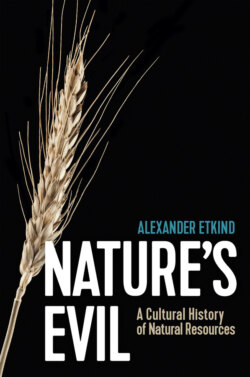Читать книгу Nature's Evil - Alexander Etkind - Страница 20
The bog civilisation
ОглавлениеThe first farmers were marsh dwellers, and their greatest skill was not ploughing or irrigation but the ability to drain water. The anthropologist James C. Scott describes how nomads came to the flood plains of Mesopotamia about 6,000 years ago. The sea level was higher than it is now. The changing courses of rivers great and small criss-crossed broad tracts of marshland. Regular floods washed away weeds and brought in silt, in which cereals and beans could be sown. Thanks to annual flooding, the soil was never exhausted. It was at this time that the selective breeding of plants began, as well as the domestication of cattle and the building of houses and boats from reeds. Probably it was at this period that people learnt to dig up, dry and burn peat – a crucial skill for surviving in wetlands (see chapter 11). Although these people sowed seed on the available plots of land and harvested crops from them, they had no inclination towards private ownership. It seems likely they had no enemies. The wetlands protected these first peasant farmers from the attention of the desert nomads.1
As Scott describes it, Mesopotamia was not unlike Holland on the eve of the Golden Age. On various continents, civilisation took its first steps in wetlands; this is how the first settled populations arose along the Jordan, Nile, Niger, Indus and Amazon rivers, and then in the early rice states of Africa and China. The central role of wetlands in the history of civilisation has been forgotten. In the written history of the Judeo-Christian world, deserts have played a disproportionate role. But wetlands are closer to our primordial condition – to the Golden Age, the lost Garden of Eden – than deserts. Humble wetlands left few traces for the historian. And yet written history began when people started keeping a tally of the grain grown on the wetlands, on tablets made of clay which was extracted from the wetlands and baked in a fire, itself fuelled by peat lifted from those wetlands.
For a long time historians believed that peasant agriculture replaced the world of savage hunters and warlike nomads. Anthropologists have revised these narratives of early states, many of them coming from biblical sources, and tell a different story. The first farmers had a poorer diet than the desert nomads; they were shorter in stature and died younger. Walls, gates and towers controlled the population, helping to tax their trade. Indeed, these early towns were more like concentration camps. Nomads robbed them, or exacted tribute, and settled inside as chieftains or kings. But epidemics were a more frequent cause of death. People and animals lived cheek by jowl; sheep, rats, lice, mosquitoes and humans spread infection. Epidemics led to hunger, uprisings, flight – in a word, to collapse.
In time, a local strongman or passing nomad would appear on the scene and impose taxes on the locals.2 He had two problems. People constantly lived on the brink of disaster. Skimming off a tithe from their meagre harvest would deprive the farmers of seed and starve them to death, an outcome which would be of no benefit to the master. The other problem was that, apart from grain, he could not count the other products these people created. They depended on perishable goods, such as fish, game or berries, or even stuff that was hidden underground, such as roots and tubers. As a stationary bandit became a local lord, he turned his village over to grain cultivation, preventing the peasants from growing other sorts of staple crop. Fencing his village and using metal tools that were unavailable to the commoners, the strongman wielded a new source of power over them: only he could cut the timber that his subjects needed for their ploughs, houses and boats. Paid in kind, he stored the grain against the risk of famine or exchanged it for things he couldn’t get locally. Taxing the captive population, such a strongman needed an independent source of power that would be different and more ‘space-intensive’ than grain.3 Exploiting and distributing this natural resource at will, he would build up his material legitimacy.
We read this in the earliest written story, preserved on clay tablets. Gilgamesh is the king of Uruk, one of the earliest cities in Mesopotamia. Tired of squabbles with his subjects, Gilgamesh leaves the city and captures the Cedar Forest. By cutting cedars and bringing their precious timber to town, he gains true power: this is the difference between a topical resource such as cedar and diffused ones such as clay and grain. The story ends when Gilgamesh uses his cedar to build a very special door and a fabulous ship. On board his ship, Gilgamesh survives a flood and comes back to his city, telling new fables and bringing new treasures. But a recently found tablet, which belongs to the same epic cycle, sounds remorseful: ‘My friend, we have reduced the forest to a wasteland … My friend, we have cut down a lofty cedar, which top abutted the heavens.’4
